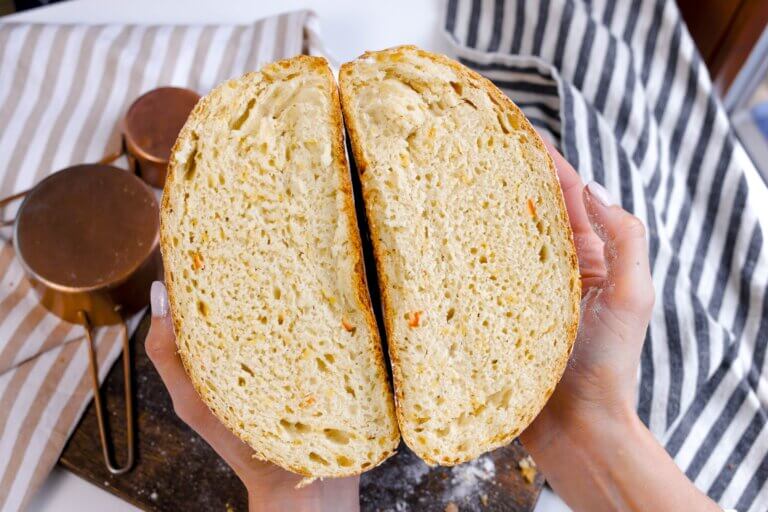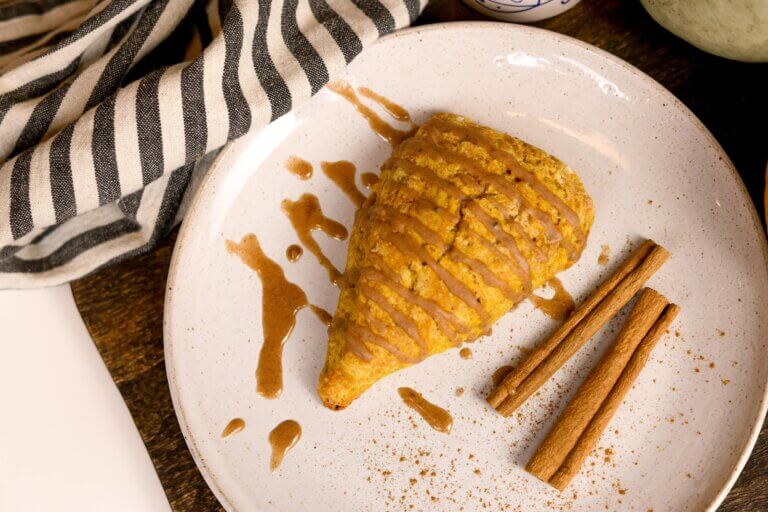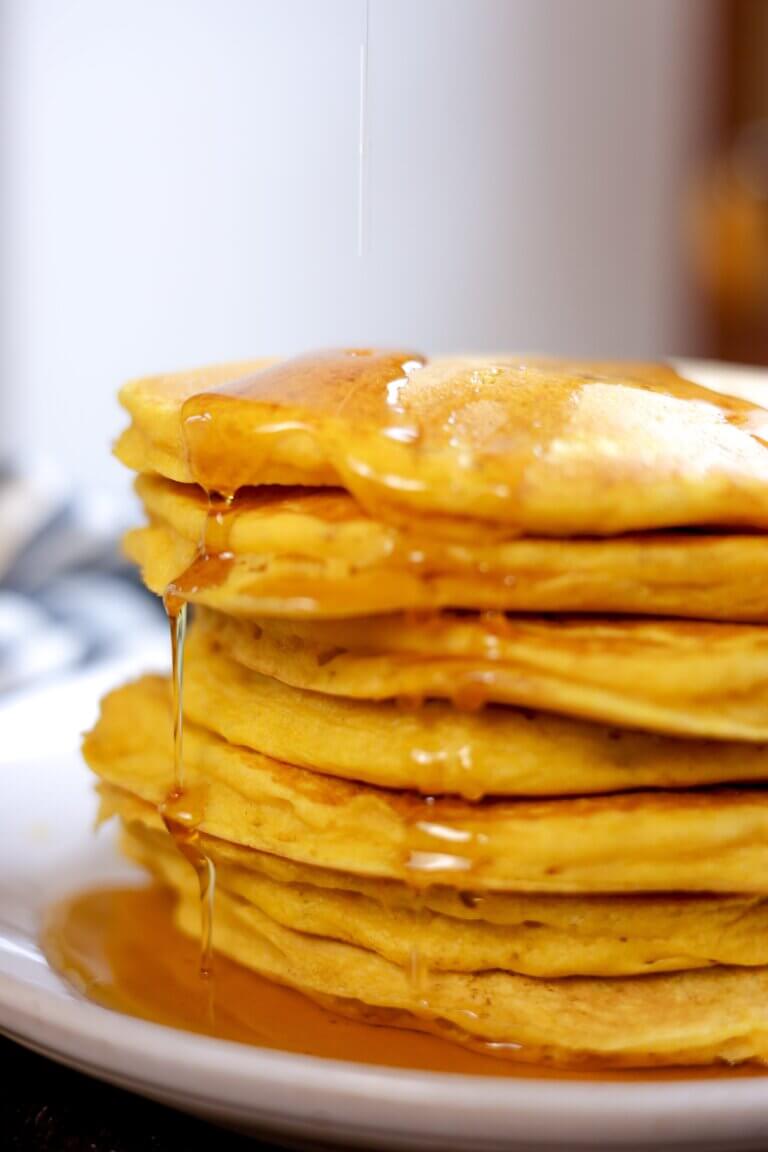Soft Sourdough Dinner Rolls Recipe
These sourdough dinner rolls are soft, fluffy, and full of tangy flavor—perfect for pairing with soups, roasts, or hearty breakfast sandwiches.

These sourdough dinner rolls are soft, fluffy, and full of flavor—just the thing to dress up a dinner table. They pair perfectly with soups, pot roasts, or even as the base for a hearty breakfast sandwich with egg and bacon. Compared to traditional dinner rolls made with commercial yeast, this sourdough version brings a pleasant tang and is easier to digest.

Why You’ll Love This Recipe
- Light and Fluffy with a Tangy Twist – These sourdough rolls are soft, pillowy, and lightly tangy, making them far more flavorful than store-bought dinner rolls.
- Versatile for Any Meal – Serve them as a side for dinner, with soup, or even turn them into breakfast sandwiches. If you enjoy classic loaves like my Super Soft Sourdough Sandwich Bread Loaf or my everyday Sourdough Bread, you’ll love how these rolls fit right into your routine.
- Simple Ingredients, Big Reward – Just flour, starter, butter, milk, egg, sugar, and salt come together beautifully. If you’re new to sourdough, this recipe is a perfect way to practice using your homemade sourdough starter.
What You’ll Need
** Head to the recipe card at the bottom of the page for exact measurements.
Tools

Instructions
- In a skillet, melt the butter over medium-low heat. Stir in the milk and set aside.
- In your stand mixer with the paddle attachment, mix starter, egg, and sugar. Pour in the butter-milk mixture and combine well.
- Add flour and salt, mixing until no dry pockets remain. Switch to the dough hook and knead on low speed for 8–10 minutes, until smooth and stretchy (passes windowpane test).
- Transfer dough to a greased bowl, cover, and let rise until doubled (6–10 hours depending on kitchen temperature).
- Grease a 9×13-inch baking dish. Divide dough into 15 equal portions (about 60–70g each) and shape into rolls. Arrange in a 3×5 layout in the dish.
- Cover and let rise again until puffy, about 1½–3 hours.
- Preheat oven to 350°F (175°C). Bake rolls for 25–30 minutes until golden brown.
- Brush tops with melted butter and sprinkle lightly with salt.
Baker’s Schedule
Overnight Rise
- 6:00 PM – Mix and knead dough. Let rise overnight.
- 8:00 AM – Shape into rolls, let rise 1½–3 hours.
- 11:00 AM – Bake 25–30 mins.
Same-Day Bake
- 7:00 AM – Mix and knead dough. Let rise 6–10 hours.
- 7:00 PM – Shape rolls, rise 1½–3 hours.
- 10:00 PM – Bake 25–30 mins.

FAQ

Tips
1. Use an Active Starter:
Make sure your starter is lively and bubbly before mixing—it’s the key to a good rise, especially with this richer dough.
2. Check with the Windowpane Test:
After kneading, stretch a small piece of dough. If it tears before you can see light through it, knead a little longer until it’s strong and elastic.
3. Be Patient with the First Rise:
Don’t rush the bulk fermentation. A slow rise (6–10 hours in a warm spot, 70–75°F / 21–24°C) develops both texture and flavor.
4. Keep Rolls Even:
For uniform baking, divide the dough into equal portions (around 60–70g each). A kitchen scale makes this simple.
5. Know When They’re Ready:
During the second rise (1½–3 hours), rolls should look puffy and nearly doubled. A gentle poke that springs back slowly means they’re good to bake.
6. Avoid Overbaking:
Bake until golden, about 25–30 minutes. Check the center with a toothpick—if it comes out clean, they’re done.
7. Brush with Butter:
Right out of the oven, brush the tops with melted butter. It gives a glossy, soft finish, and a light sprinkle of salt balances the flavor.
8. Reheat Leftovers Properly:
Microwave with a damp paper towel for 10–15 seconds to keep them moist, or warm in a 325°F (165°C) oven for 5–7 minutes.
Storage

Soft Sourdough Dinner Rolls Recipe
Equipment
- Large mixing bowl
- Measuring Cups and Spoons/ kitchen scale
- Whisk or fork
- Wooden spoon or spatula
- Kitchen Aid
Ingredients
- 70 g 5tbs unsalted butter
- 240 g whole milk
- 200 g active sourdough starter
- 1 egg
- 50 g sugar
- 500 g all purpose flour
- 13 g salt
- For finishing: 2 tablespoons unsalted butter melted, kosher salt
Instructions
- In a skillet, melt the butter over medium-low heat. Stir in the milk and set aside.
- In your stand mixer with the paddle attachment, mix starter, egg, and sugar. Pour in the butter-milk mixture and combine well.
- Add flour and salt, mixing until no dry pockets remain. Switch to the dough hook and knead on low speed for 8–10 minutes, until smooth and stretchy (passes windowpane test).
- Transfer dough to a greased bowl, cover, and let rise until doubled (6–10 hours depending on kitchen temperature).
- Grease a 9×13-inch baking dish. Divide dough into 15 equal portions (about 60–70g each) and shape into rolls. Arrange in a 3×5 layout in the dish.
- Cover and let rise again until puffy, about 1½–3 hours.
- Preheat oven to 350°F (175°C). Bake rolls for 25–30 minutes until golden brown.
- Brush tops with melted butter and sprinkle lightly with salt.
Notes
Tips
- Use an Active Starter: Make sure your starter is lively and bubbly before mixing—it’s the key to a good rise, especially with this richer dough.
- Check with the Windowpane Test: After kneading, stretch a small piece of dough. If it tears before you can see light through it, knead a little longer until it’s strong and elastic.
- Be Patient with the First Rise: Don’t rush the bulk fermentation. A slow rise (6–10 hours in a warm spot, 70–75°F / 21–24°C) develops both texture and flavor.
- Keep Rolls Even: For uniform baking, divide the dough into equal portions (around 60–70g each). A kitchen scale makes this simple.
- Know When They’re Ready: During the second rise (1½–3 hours), rolls should look puffy and nearly doubled. A gentle poke that springs back slowly means they’re good to bake.
- Avoid Overbaking: Bake until golden, about 25–30 minutes. Check the center with a toothpick—if it comes out clean, they’re done.
- Brush with Butter: Right out of the oven, brush the tops with melted butter. It gives a glossy, soft finish, and a light sprinkle of salt balances the flavor.
- Reheat Leftovers Properly: Microwave with a damp paper towel for 10–15 seconds to keep them moist, or warm in a 325°F (165°C) oven for 5–7 minutes.
Storage
- Room Temperature: Store cooled rolls in an airtight container or bag for up to 3 days.
- Refrigerator: Keep in an airtight container for up to 1 week (reheat to restore softness).
- Freezer: Freeze for up to 3 months, separating rolls with parchment. Reheat from frozen at 300°F (150°C) for 8–10 minutes.
- Reheating: Microwave with a damp paper towel for 10–15 seconds or warm in a 325°F (165°C) oven for 5–7 minutes.
This article may contain affiliate links, which means I make a small commission at no extra cost to you. As an Amazon Associate, I earn from qualifying purchases at no extra cost to you. You can read the full disclosure policy.









